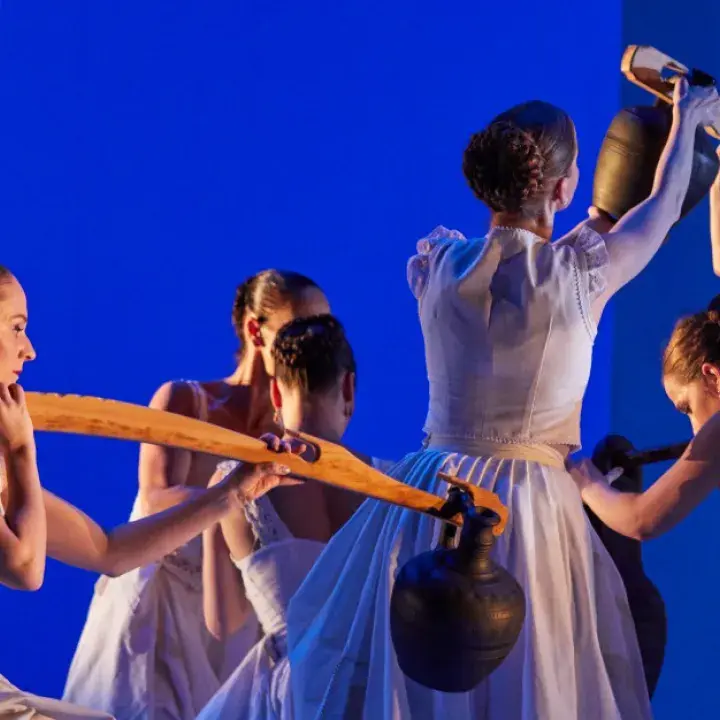It is the first time in the history of Hungarian stage folk dance that the multi-coloured traditional cultures of the peoples living in the Délvidék (the region of historic southern Hungary, now partly in Serbia and Croatia) – Hungarians, Serbs, Croats, Germans and Romanians – have been presented. The Délvidék boasts a varied folk dance and folk music heritage, which features the unique characteristics of the cultures of Central Europe and the Balkans exerting a remarkable impact on one another in this region.
Water is a crucial dramaturgical motif of the performance: the Tisza, the Drava, the Sava, the Mures and the Mur – several bubbling streams and rivers flowing towards the same direction, to finally merge into one: the Danube. The rich symbolicism of water – the source of life, the means of purification and a critical element of rebirth – are inherent to all cultures. We will come to showcase the traditional dance and music cultures of various regions through changing time periods with the help of this rich anthropological content. The stage scene enhances the display of the constantly changing images, complemented by animation, projected pictures and shadowplays. The genuine attires essentially belong to the spectacle, which is to display the regional differences inherent to the various ethnic groups.
The performance was created in the framework of the cooperation between Müpa and the House of Traditions - Hungarian State Folk Ensemble.
The duration of the performance is 80 minutes without intermission.

